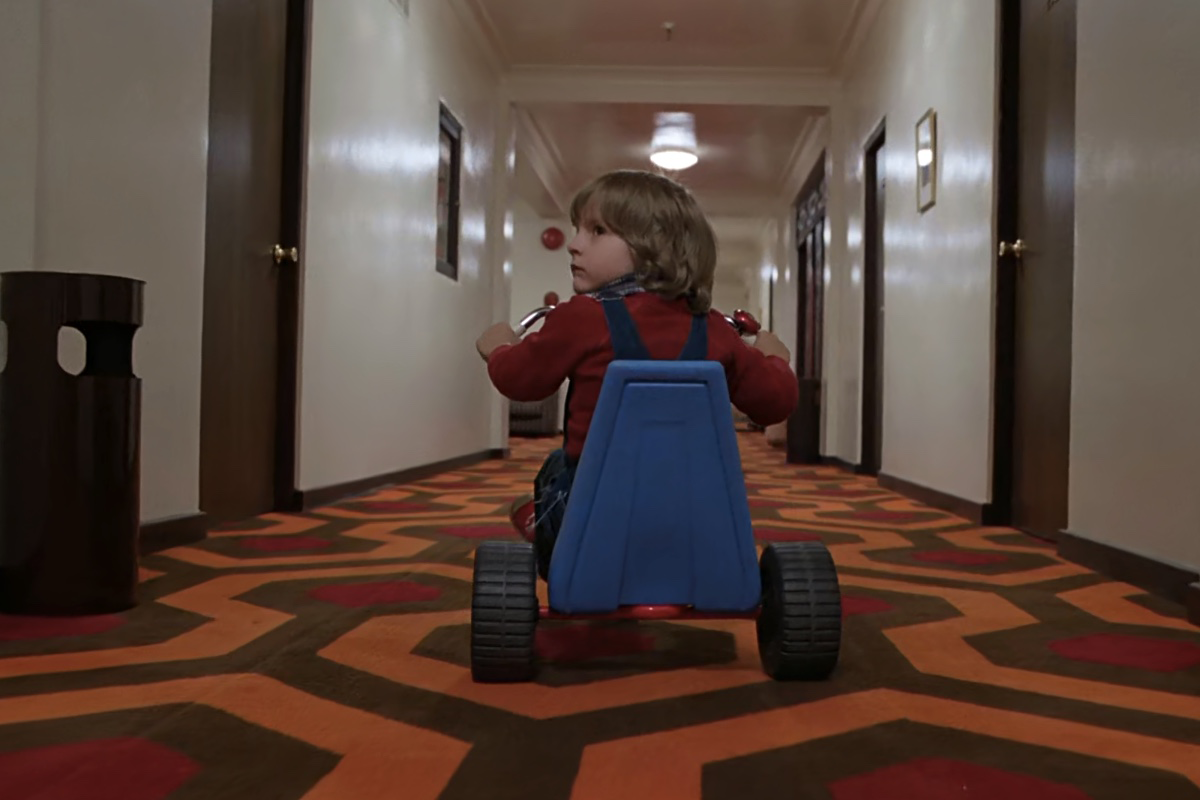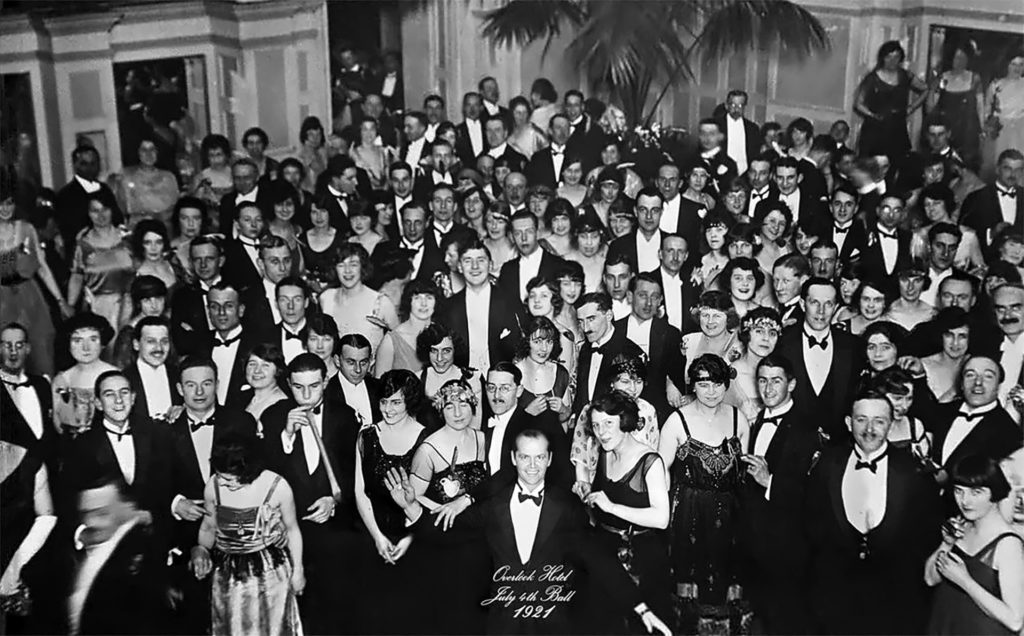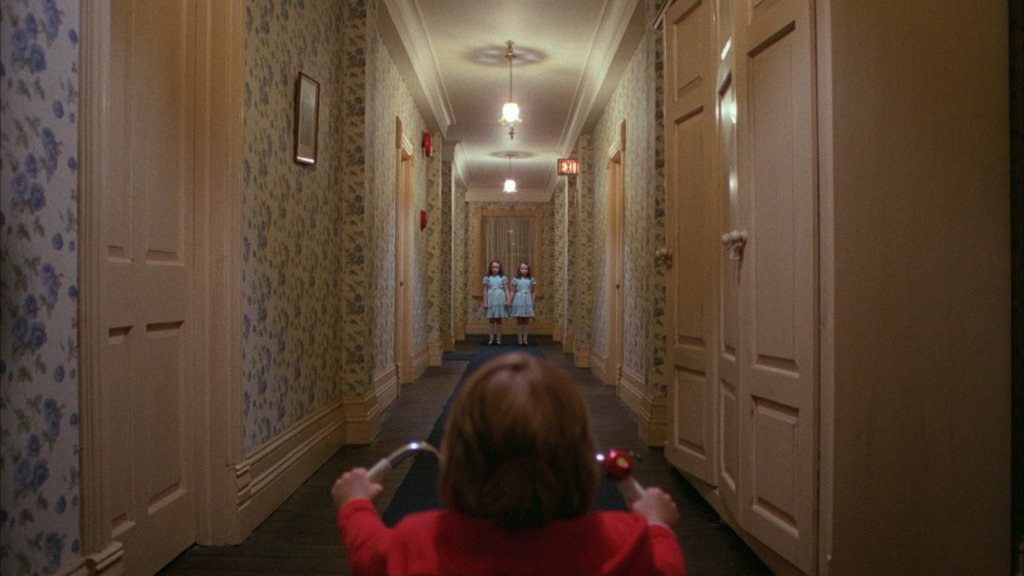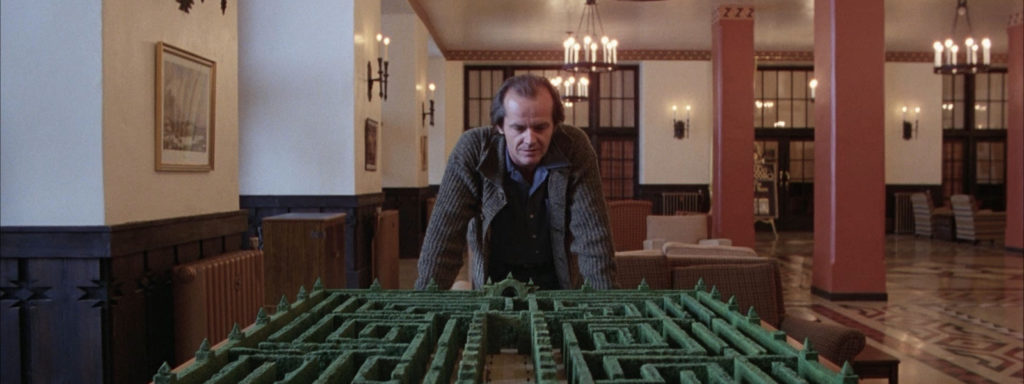
Stanley Kubrick’s Shining is a dense, ambitious film that poses dozens of interpretative possibilities and opens up numerous questions. What is the shining? Who has it? What does the last frame mean? Now more than ever, with the coming out of the sequel Doctor Sleep, the analysis of the visual (particularly the camera movements) can help solve some of the doubts this masterpiece bears.
Please note that this text may contain SPOILERS. If you still haven’t watched the film, please come back to this after you did.
Brief history of the controversy surrounding the film
Shining is a film directed by Stanley Kubrick and released in 1980. There’s been some controversies regarding this film, mainly because Stephen King (the author of the novel that was adapted into the film) has often expressed his discontent and considered the film as a betrayal of his original story.
We are very little interested in this theme and for this reason our analysis concerns the visual implant that the director has created for this film (visual that ultimately becomes the content of the film).
Introduction
The mise-en-scene of Shining is, for all intents and purposes, a real masterclass in directing a film.
The brief (is it really?) analysis of this text tries to investigate the bridge between the camera movements (so integral of this film) to the spectator receiving, therefore focusing just on one of the dozens of interpretative keys that can be used to deal with this exceptional film.
Kubrick establishes in the narratives of the film the concept of the shining: they are genuine hallucinations, delusions that would paranoid predict the future as well as obsessively remark the past. This peculiarity connotes some of the characters of the film and gradually all three members of the family will end up showing: first Danny (Danny Lloyd) who seems to own this power from the beginning; we then understand that Dick Hallorann (Scatman Crothers) has it, too. During the course of the film we see Jack (Jack Nicholson) having the same shining when he enters room 237 (the young lady turning into an old woman) and also in the ball scene; and finally Wendy (Shelley Duvall) that during her escape from the Overlook hotel stumbles across some (probably the strangest) hallucinations.

The shining is often accompanied by the restatement of a certain inconsistency in the point of view of the film (and nonetheless in the narrative): in fact, the last frame of the picture, with the movement of camera that brings us to the group photo where we can see Jack Torrance in the hotel supposedly from the beginning of the century. This establishes the impossibility of the narratives (from a naturalistic/realistic point of view) that we’ve just witnessed.
The very same quality (!) of inconsistency is also played when Jack says to Wendy that he didn’t see anything in the room 237. Not only we’ve seen Danny going in the room and coming back scratched and beaten, but we’ve also seen Jack actually meeting a very strange figure in the same room – there’s a biological difficulty for humans not to believe what we see given our evolution: if the primates were to doubt their sight and their predators were able to camouflage, it’s very likely that they wouldn’t have be able to survive. So the real question now is: whose point of view is this?

When Danny is on his tricycle and the steadicam follows him at different speed, breaking the rule of the camera mimesis, almost as if it had its own life, who is represented by that camera? What is Kubrick telling us when, as soon as he sees the two girls, Danny stops and the camera stops a bit later, concurring to the growth of the anxiety feeling and again breaking the rule of the transparent camera movements (that basically disappears without being noted in the spectator’s mind)? Again, whose point of view is that?
The embodied simulation
Before
we can proceed, we have got to take some steps aside in order to
understand how, generally, the camera movements are perceived.
A
fundamental theory of recent foundation is the one called embodied
simulation (1) that, in fact, sits on the plan of the spectator’s
perception. This theory is based on the discovery of the mirror
neuron and affirms that the perception of a film in all of its
dynamics lies on the level of a bodily motor simulation of the film’s
happenings.
Practically, our brain (to be intended as our body’s multi-modal responsible of perception and reception on sub-personal dynamics and not only reflective ones), with the perception and the activation of the mirror neuron system, understands what is perceived through the use of the very same neural circuits that are fired even when the same action (in this case only observed) is acted by the first person. The only difference is that when the one who perceives is not the one who acts, the firing of the system stops on the spinal tract (not activated in all of its dynamics) and therefore the action is not really produced (imitated) but only simulated.
The action, the observation of an action or even just the imagination of an action share the same mechanisms and the activation of neural circuits that are similar.
This brief recap of this theory brings us to the core of the argument: what is this telling in regards to Shining and the camera movements?
We know that the camera movement is usually linked to an emphasis on the spectator’s participation to an action. Very often, this stylistic choice draws around a specific content a frame of affective and emotive perception.
According to
Gallese and the common practice of studies around the camera
movements, these have to be “invisible, the spectator must not
experience that the camera is moving in a virtuosic or unnatural way,
but they [spectators] have to resonate in a deep way (low-level)
with the movement, so that they can adhere perfectly with the sum of
action and emotion” (2). This way of intending the camera movements
is certainly noticeable in the classic
hollywood
cinema (although, even in this case there are enormous
exceptions).
Thanks to some key cinematographic practices that
tried to break this mimesis
concept, it’s no longer possible to limit the analysis of the
movements on this adherence paradigm. It’s clear that for the
neurobiologicalstudies
is absolutely vital to make the camera movements as close to our
everyday perception as possible, so that they can offer an
explanation of proximity between the way we perceive the world and
the way we perceive an estetico
fact: Gallese, himself, affirms that in some cases “the complexity
of the movement and its irreducibility to our motor potential (more
than visual), makes it opaque and visible” – what we think it that
this must not be interpreted as a limit, but moreover like a way for
the directors to enlarge their communication tools and activate
cognitive
processes (of a higher-level)
in the audience.
If we look back at Shining, in fact, the last shot is beyond the factors that make a movement invisible (just like in the tricycle, but more extreme as there are no characters this time) but it poses down some questions (higher-level process) thanks to the “opacity” and “visibility” of the movement itself.
The camera movements
The feeling of “participation to the action” of the camera is enhanced by the fact that its behaviour is anthropomorphized both in the directors’ intentions (not necessarily always) and in the spectators’ perception. The behaviour of the camera is perceived more as a human one than a mechanical one (although some times it can even transcends the human sight possibilities). In this way, the transparency of the movement should fall under a pre-reflective characteristic of the same: practically, we experience most of the camera movements with the same level of “consciousness” that we use experiencing our own body.
The ways different techniques of camera movements lead to different effects in the perception of the visual language have been studied through EEG (3) and some correlate experiments. The objective of the experiments was to verify if the use of different camera movement (and in the condition of the observation of the same scene) would lead to a different reaction from the mirror neuron system or to the same one: the result was that the physical movement and the reduction of the distance from an object, obtained through the movement of the camera towards this object determine the activation of the motor simulation of mirror neuron, as if we, perceiving, were getting closer to the object moreover than a “mechanical” eye.
Within this landscape (and here’s something interesting for Shining), the study says that, of all the techniques, the steadicam is the tool that has the greater efficacy in the activation of the mirror neurons because it’s the most similar to the way the body perceive while moving towards an object, whilst the zoom is the instrument that has the least efficacy to do so, making the perception almost irrealistic (it would be interesting to study Barry Lyndon with this in mind).
For what concerns the handheld camera, although very often this has been thought to be the visual language style closer to the human sight given its mobility, this is definitely not true as our mind perception of our movement uses a filter that stabilizes it. This is why the steadicam is the closest.
The feeling of received realism given by an handheld camera is actually a second-grade effect of a reality no longer experienced through our eyes, but through the eyes of any recording device, one of those we have in our everyday life (and therefore is more lying on a higher-level cognitive layer). The reality effect of this movement is offered more from the sense of unpreparedness to the scene, captured in an immediate way from an immediate tool, more than of effective perception to be intended similar to the way we perceive the world.
So, it’s the steadicam that makes, on the perception level, the inclusion of the spectator’s body in the scene possible – and fire the most out of the neural circuits that would activate if we were really on that place, at that time. This can happen both when we perceive that the movement is the one of a character or, as it happens in Shining, untied from any. And we’re back at square one: whose point of view is this?
Who’s looking in the Overlook Hotel?

The “Overlook” Hotel is obviously a metaphor that doesn’t necessarily go in just one unambiguous direction but is open to different interpretations, this being the strength of the film in our point of view.
Who holds,
inside the narratives, this power of “looking from over” is Jack
Torrance and Kubrick shows him looking from the top of a miniature
labyrinth – inside of which we can see Wendy and Danny (whilst
they’re in the real labyrinth outside). Only issue being that Jack
Torrance dies while the point of view continues to wander around
unhindered.
Could it be then that it is the point of view of the
author (director) who sees everything and pulls the string? In this
case we would be facing an opera that would like to reason more on
the possibilities of a director to observe and comment: if this could
definitely be a key given the ambiguous nature of the text, we think
that this would not give the right merit to the attention to the
communication and to the details of the staging the director used in
order to “play” (yes, on this word, we all hear the twins) with
the spectator. Stanley
Kubrick is always been very considerate in regards to the dynamics of
reception and extremely powerful in rendering those same dynamics
ambiguous and to some extent only personally decipherable and not
generalisable.
The last shot, in fact, is aimed at the spectator only.
The Shining.
If it’s true,
as we’ve already seen, that at some point all the main characters of
the film show this hallucinatory condition, in the last shot – and
thanks to the studies regarding the relation between the camera
movements and our bodies – we can definitely affirm that the camera
is able to experience, through an anthropomorphization process in the
perceiver’s brain, its own hallucinatory condition – or at the very
least to experience the effects of these delusions.
If this can be
true, it’s only because the perception and assumption of these
movements (bodily, not mechanical) is ultimately relying on the
spectator’s work. Therefore, in conclusion, who lives this shining
and this hallucinations is the spectator
– together with his own body.
Stanley Kubrick, in a film in which are cleverly mixed in psychological traits (hallucination; Freud’s unheimlich), cinematographic formal insights, questions and narrative ambiguousness and everything else you are able to find in, proposes, for all intents and purposes, an argument on the position of the spectator in regards to a film: an embodied position, physical, existent and resonant thanks to the existence of the mirror neuron system(4) – that invites its audience to think and use the reason while living (perceiving) an experience that has the traits of a delusion and of a dream (nightmare).
© 2019 – All rights reserved, registration n° 113437 (Patamu)
NOTES:
(1) Vittorio Gallese, Michele Guerra, Lo schermo empatico, Raffaello Cortina Editore, Milano, 2015
(2) Vittorio Gallese, Michele Guerra, op. Cit., p.141
(3) Vittorio Gallese, Michele Guerra, op. Cit., p.160
(4) Kubrick obviously couldn’t know about the existence of this system as it’s been discovered a good few years later , although it seems pretty clear that he had bet on the physicality of the steadicam movement.
You don’t know what film to watch tonight? Please have a look at our Film Alphabet page.